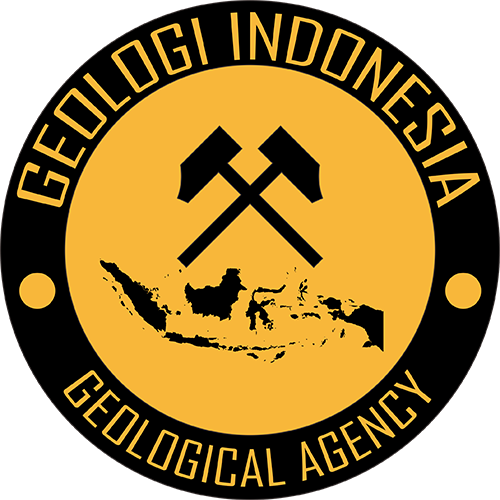Basin with Geology and Geophysics Data
Basin Status
Transtensional
Tectonic Setting
0
Area (km2)
0
Visitor Count
0
Likes
Prospectivity & Resources
of
Weda Basin
Basin Capacity
Data based on
18 Oct 2024
Oil
N/A
MMBO
(Million Barrels of Oil)
Gas
N/A
TCF
(Trillion Cubic Feet)
Resources
Data based on
18 Oct 2024
Oil
Conventional N/A
Conventional N/A
MMBO
(Million Barrels of Oil)
Gas
Conventional N/A
Conventional N/A
TCF
(Trillion Cubic Feet)
Oil
Unconventional N/A
Unconventional N/A
MMBO
(Million Barrels of Oil)
Gas
Unconventional N/A
Unconventional N/A
TCF
(Trillion Cubic Feet)
Executive Summary
of
Weda Basin
Description
Version
1
Published Date
20 Jan 2023
Uploaded Date
-
Photos
Some footage of Weda Basin
Introduction
Preliminary details of Weda Basin
Data based on:
20 Jan 2023
Exploration History
Detailed history of Weda Basin
Data based on:
20 Jan 2023
Regional Geology
Detailed regional geology of Weda Basin
In the Weda Basin, there are 115 field geological observation points carried out by the Weda Oil and Gas Geological Survey Team on the southern and eastern arms of Halmahera Island
Data based on:
20 Jan 2023
Petroleum System
Detailed petroleum system of Weda Basin
The investigation for source rock is focused on finding formations that may be the source. Several organic chemical analyzes were carried out on the Eocene Subaim Limestone Formation, the Paleocene-Eocene Dorosagu Formation and the Miocene-Pliocene Weda Formation with TOC values between 0.70-19.49 percent. The maturity level or Tmax of some of the samples analyzed were in the immature to early ripe phase (403-444 degres Celsius).Several indications of possible prospects for the petroleum system found based on the results of field surveys and laboratory analysis indicate that there is potential for source rock to produce hydrocarbons. The source and reservoir rocks indicated in the Weda Basin are reef limestones in the eastern arm of Halmahera Island which are Eocene which may be associated with the earliest syn-rift sediments in this basin. Geochemical analysis of several samples showed good TOC values in shale rocks of the Dodaga Formation and black clay rocks of the Subaim Formation. Even though the results of the analysis indicate that the source rock is immature, there is still the possibility of the source rock being buried deeply resulting in mature source rock. Reservoir rocks are found in the Subaim Formation in the form of reef limestones that grow (reefal buildups). The overburden in the petroleum system is likely to originate from the Miocene-Pliocene claystone of the Weda Formation. The most significant petroleum system is analogy to the Salawati Basin which has produced hydrocarbons. Where the reservoir that develops in the Halmahera Basin is a pinnacle reef found in the Miocene-Pliocene Tingteng Formation, while the source rock from the Weda Formation of the same age shows mature source rock from the results of laboratory analysis. Although the source rock is quite young, it is possible to mature due to magmatism activity at a younger age which affects the maturity of the source rock.
Data based on:
20 Jan 2023
Resources
Detailed resources of Weda Basin
-
Data based on:
20 Jan 2023
Petroleum System Chart
of
Weda Basin
Description
Version
-
Published Date
-
Uploaded Date
-
Petroleum System Chart
Petroleum system chart to Weda Basin
Montage
of
Weda Basin
Description
Version
-
Published Date
-
Uploaded Date
-
Montage
Detailed montage of Weda Basin
Reports & Publications
of
Weda Basin
Description
Version
-
Published Date
-
Uploaded Date
-
Reports & Publications PDF
Detailed reports & publications of <-?= $basin->name; ?> Basin
Archives of Report & Publication
| Date | Report Description | Version | Doc | |
| - | No Data | - | - | - |
| Date | Publication Description | Version | Doc | |
| Oct 09, 2022 | Jurnal Cekungan Weda Tahun 2022 | 1.0 | Download | |
| Oct 04, 2021 | Jurnal Cekungan Weda Tahun 2021 | 1.0 | Download | |
| Oct 04, 2020 | Jurnal Cekungan Weda Tahun 2020 | 1.0 | Download | |
| Oct 01, 2019 | Jurnal Cekungan Weda Tahun 2019 | 2.0 | Download | |
| Oct 06, 2018 | Jurnal Cekungan Weda Tahun 2018 | 2.0 | Download | |
| Oct 08, 2017 | Jurnal Cekungan Weda Tahun 2017 | 2.0 | Download | |
| Oct 09, 2016 | Jurnal Cekungan Weda Tahun 2016 | 1.0 | Download | |
| Oct 02, 2015 | Jurnal Cekungan Weda Tahun 2015 | 2.0 | Download | |
| Oct 02, 2014 | Jurnal Cekungan Weda Tahun 2014 | 1.0 | Download | |
| Oct 07, 2013 | Jurnal Cekungan Weda Tahun 2013 | 1.0 | Download | |
| Oct 08, 2012 | Jurnal Cekungan Weda Tahun 2012 | 1.0 | Download |


